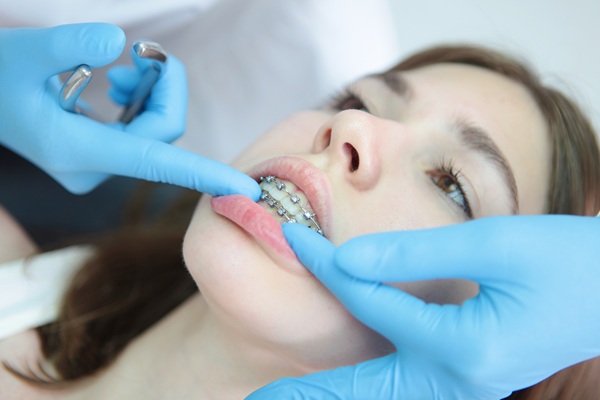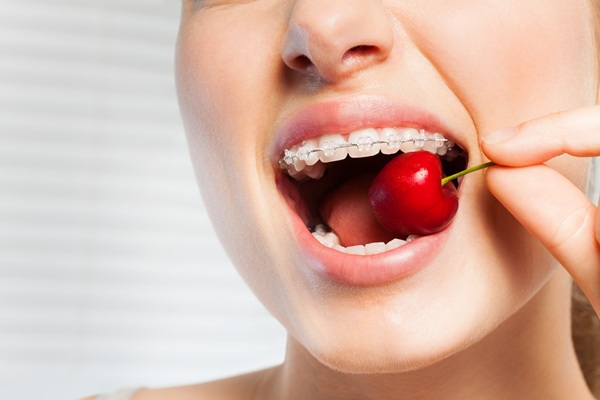3 Common Types of Braces

Braces are a common treatment that general dentists offer to patients who have crooked teeth or uneven bites. Modern dentistry has allowed for the evolution of multiple kinds of braces, which allows patients to consider the advantages of each one. Ready to learn more?
Three different types of braces
Each type of braces works similarly, in the sense that the goal is to straighten crooked teeth or adjust an uneven bite. Braces, no matter the kind, involve the use of brackets and wires. Every few weeks, the patient will visit their general dentist to undergo an adjustment. The adjustment tightens the wires and ensures that the braces are working, as the teeth shift into their new position.
Outlined below are three of the most common types of braces. Keep reading to find out more!
Traditional metal braces
Metal braces are the most common type of teeth straightening treatment available today. They are also the longest known method of treatment among general dentists. Braces that are made of metal consist of brackets and wires.
An individual metal bracket is cemented onto the front of each tooth, and metal wires run through each bracket connecting them all together. Small bands are placed to help secure the brackets. When general dentists are administering traditional braces to children, they often have the opportunity to choose a color for their bands.
Ceramic or clear braces
Ceramic braces have become a popular choice. They are also referred to as clear braces because the wires are clear in color and the brackets are tooth-colored. This type of braces works the same way that traditional metal ones do, except, they are made of different materials.
General dentists often administer clear braces to patients looking for a more discreet option. Because the wires are clear and the brackets are tooth-colored, they are less noticeable, which can be seen as advantageous to an adult patient who does not want attention drawn to their mouth.
Lingual braces
Lingual braces are another common type of teeth straightening treatment that general dentists administer. Lingual braces are similar to metal ones, in the sense that they are made of metal. However, unlike traditional braces, lingual ones are cemented onto the underside of the teeth, instead of the front.
One advantage of these braces is that they are not easily noticeable. Patients consider this type when they are seeking a more discreet treatment route. One thing to note about lingual braces is that they can be irritating to the mouth, specifically, the tongue. Because they are on the underside of the teeth, the tongue is more likely to run into the brackets and wires.
Reach out today!
Braces are a great option to straighten crooked teeth and correct uneven bites. With the help of a general dentist, braces of any kind can be considered and explored. Reach out today with any questions or concerns. Our team is here to help.
Request an appointment here: https://www.smilesbyshell.com or call Dr. Gregory K Shell at (828) 386-9811 for an appointment in our Granite Falls office.
Check out what others are saying about our services on Yelp: Read our Yelp reviews.
Recent Posts
Local orthodontics offers convenient access to expert care close to home for patients who want a straighter smile without major schedule disruptions. By choosing local orthodontics, patients reduce commute time, simplify their appointments, and feel more connected to the team guiding their treatment. An orthodontist in the neighborhood understands community routines, school calendars, and local…
Clear braces for teens are recommended when a dentist notices that your child is developing teeth or jaw alignment issues. The American Association of Orthodontists advises taking your child for orthodontic assessment once they reach the age of 7.At this point, their smile should be fully developed and developing issues can be detected. Appliances like…
An orthodontist specializes in malocclusions, or dental misalignments, that affect the jawbone, teeth, or facial symmetry. If a dentist recommended you or your child for this dental specialist, you may wonder what to expect at the first appointment. While it is a relatively simple process, there are some differences in how the orthodontist and their…
Dental braces are one of the most common orthodontic treatments used to correct misaligned teeth. They improve both your oral function and appearance. With advancements in orthodontics, patients now have access to a range of options tailored to individual needs.Traditional metal braces are the most commonly used type of orthodontic treatment and have been the…


